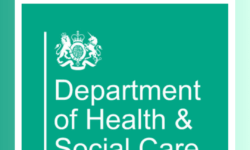Recently published data from the STRONG clinical trial of Zolgensma indicate that the gene therapy is safe and can be effective when delivered intrathecally, meaning directly into the fluid bathing the brain and spinal cord.
Intravenous injections (into the blood) of Zolgensma result in distribution of the gene therapy throughout the body, including in the motor neurons. After testing in several clinical trials, this approach was approved to treat SMA and is used in the clinic in a select group of infants less than 12 months of age. However, because the amount of Zolgensma that is injected is based on body weight, there are safety concerns in heavier people, who would require a prohibitively high dose of the virus.
To circumvent this issue, intrathecal injections of Zolgensma are being tested in the STRONG trial. It is known from experiments in the laboratory that this type of injection results in delivery of Zolgensma throughout the body. In addition, 10x less Zolgensma is needed to get an equivalent distribution in the brain and spinal cord as that with intravenous injections.
STRONG is a Phase I, open-label trial designed to test the safety and effectiveness of several different intrathecal doses of Zolgensma in people with SMA, who are able to sit unaided for 10 seconds, but not stand independently. 32 participants, all of whom have three copies of the SMN2 gene and are aged between 6 and 60 months, were divided into three groups – three people received the low dose, 25 the medium dose and four the high dose.
Participants received a single injection into the lower spine and were divided into two additional groups – those that received the drug before 24 months of age and those that received it between 24 and 60 months. Participants were assessed for 12 to 15 months after administration of the treatment.
No deaths were reported, but all patients experienced one or more ‘treatment-emergent adverse events’ (TEAEs), which may or may not be associated with Zolgensma. These included upper respiratory tract infections (63% of patients), fever (56%), cough (34%) and vomiting (31%). 12 TEAEs were deemed to be related to Zolgensma, one of which was categorised as serious – elevated levels of specific proteins in the liver indicating damage.
The primary measure of treatment effectiveness was assessment using the Hammersmith Functional Motor Scale Expanded (HFMSE) for SMA. A mean improvement from baseline of six points was reported after 12 months of treatment in the older group treated with the medium dose. 11 out of 12 people (92%) in this group achieved an improvement of three or more points, compared to only 2 out of 15 (13%) in a natural history study of SMA patients not receiving treatment. No people in this treatment group achieved the ability to independently walk.
In the younger group, one patient (out of 13) treated with the medium dose, and one patient (out of 3) treated with the low dose achieved the ability to stand independently. One patient (out of 13) treated with the medium dose also walked independently for at least five steps. However, findings in this treatment group are not significantly different compared to the expected outcome of SMA without treatment.
Overall, it was deemed that intrathecal delivery of Zolgensma is safe and well tolerated, and consistent with the intravenous delivery method. Additionally, it was identified that older patients treated with the medium dose achieved clinically meaningful improvements in HFMSE scores. However, there was no clear positive effect of treatment in younger participants within the observation period.
The medium dose of Zolgensma is now being tested in the STEER trial, which is an ongoing Phase III study to evaluate safety and effectiveness of intrathecal injections of Zolgensma in treatment-naïve people with SMA Type 2, aged between 2 and 18 years.


